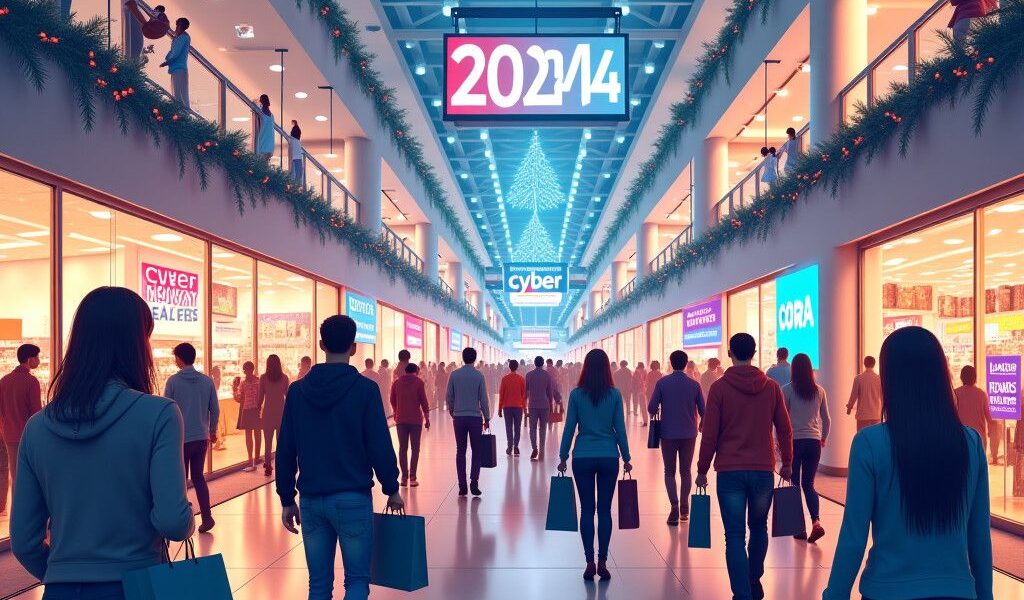The Cyber 5 weekend of 2024 was marked by impressive online sales, totaling more than $41 billion, up from $38 billion in 2023, according to Adobe Analytics. While this figure sets a new record for ecommerce sales, it also unveiled a noteworthy trend: significantly fewer U.S. consumers participated in shopping activities during this period, both online and in stores. As we examine the numbers, they reveal a complex narrative about consumer behavior, strategic marketing, and the future of retail during one of the busiest shopping seasons.
The Cyber 5 encompasses the five days from Thanksgiving through Cyber Monday and has historically been an essential benchmark for retailers. This year, the National Retail Federation (NRF) reported that approximately 197 million consumers engaged in shopping activities, a decrease from last year’s 200.4 million. Interestingly, this year’s figures surpassed NRF’s initial expectations despite the decline. Matthew Shay, NRF President and CEO, highlighted the enduring significance of the Thanksgiving weekend for both consumers and retailers, stating, “Thanksgiving weekend retains its prominence among holiday spending events.”
Examining the specifics reveals that while just over 124 million consumers shopped online this year—down from 134.2 million in 2023—the spending per person increased. This shift suggests that while fewer individuals opted to shop online, those who did were more selective and intentional about their purchases. In contrast, in-store shopping saw a rise, with 126 million consumers participating this year compared to 121.4 million in 2023, indicating that shoppers may have preferred a tactile and immediate shopping experience.
Black Friday continued its trend as the busiest shopping day of the year, with NRF reporting 81.7 million in-store shoppers, an increase from 76.2 million in 2023. This marked the highest number of in-store Black Friday shoppers since the onset of the pandemic. However, online engagement on that day experienced a slight dip, with 87.3 million participating, down from last year’s 90.6 million. The Saturday of the Cyber 5 also saw high in-store participation, with 61.1 million shoppers, while Cyber Monday, traditionally the peak day for online shopping, recorded 64.4 million shoppers—nearly 9 million fewer than in 2023.
The robust growth of online sales is notable, with an increase of 8.2% from the previous year. This rise seems to be fueled by strategic marketing efforts from retailers. For instance, brands like Collars & Co. reported a 25% increase in advertising spend leading up to the Cyber 5, capitalizing on rising consumer intent to shop. In addition, Cozy Earth focused on honing its digital marketing strategies, emphasizing personalized offers and targeted ads, which likely contributed to the increase in average spending.
Adobe Analytics’ findings are based on extensive data, covering more than 1 trillion visits to U.S. retail sites, 100 million stock-keeping units (SKUs), and 18 product categories. This considerable breadth of data adds credibility to the insights drawn about consumer behavior during the Cyber 5 weekend. Given that over 200 of the top 1000 online retailers utilize Adobe Analytics for various purposes—including web analytics, site design, and content management—it’s clear that leveraging technology and data is crucial for understanding and responding to market trends.
A significant takeaway from this year’s Cyber 5 is the shifting consumer sentiment towards shopping. Many shoppers seem to prefer a more considered approach to spending, possibly influenced by economic factors or changing personal priorities. Also, as retailers prepare for future shopping seasons, understanding these behaviors will be essential in shaping marketing strategies and inventory management.
In conclusion, while the Cyber 5 2024 showcased extraordinary online sales, it also highlighted a reduction in the number of shoppers. This duality presents both challenges and opportunities for retailers. By analyzing consumer behavior and adjustments in shopping patterns, brands can better position themselves for success in an increasingly competitive landscape. As the retail environment continues to evolve, strategies focused on consumer engagement, personalized marketing, and data-driven decisions will likely define the next phase of ecommerce growth.












